|
|
National Palace Museum e-Learning |
|
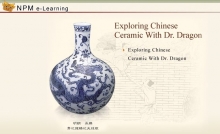 National Palace Museum e-Learning provides visitors with animation videos and games to develop an understanding of types and functions of the bronze vessels and porcelains, learn how to protect and care for collectible objects, explore basic appreciation techniques of paintings and calligraphy, etc. There are 9 topics:1. A Marvelous Journey through Bronzes! 2. Exploring Chinese Ceramic with Dr. Dragon. 3. Cracking China: Porcelain Manufacturing in the 18th Century. 4. Caring for Collectible Objects. 5. Chinese Paintings. .....
National Palace Museum e-Learning provides visitors with animation videos and games to develop an understanding of types and functions of the bronze vessels and porcelains, learn how to protect and care for collectible objects, explore basic appreciation techniques of paintings and calligraphy, etc. There are 9 topics:1. A Marvelous Journey through Bronzes! 2. Exploring Chinese Ceramic with Dr. Dragon. 3. Cracking China: Porcelain Manufacturing in the 18th Century. 4. Caring for Collectible Objects. 5. Chinese Paintings. .....
|
|
Read more...
|
|
|
National Museum of Taiwan History: Ilha Formosa! |
|
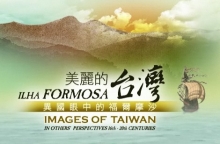 In the 16th century, after passing Taiwan and seeing the greenness of luxuriant forests on the island, the Portuguese sailors first exclaimed, “Ilha Formosa!” which means beautiful island. For centuries thereafter, the Europeans, Americans and Japanese all came to this beautiful island for missionary, expedition, trade and colonial activities. “Sail to the East,” “Journals of Formosa,” “Foreigners on Formosa,” and “Foreigners Here and Now” are the 4 sections of a video produced by the National Museum of Taiwan History. The video presents images of Taiwan in the foreign eyes from the 16th through the 20th century...
In the 16th century, after passing Taiwan and seeing the greenness of luxuriant forests on the island, the Portuguese sailors first exclaimed, “Ilha Formosa!” which means beautiful island. For centuries thereafter, the Europeans, Americans and Japanese all came to this beautiful island for missionary, expedition, trade and colonial activities. “Sail to the East,” “Journals of Formosa,” “Foreigners on Formosa,” and “Foreigners Here and Now” are the 4 sections of a video produced by the National Museum of Taiwan History. The video presents images of Taiwan in the foreign eyes from the 16th through the 20th century... |
|
Read more...
|
|
Institute of History and Philology, Academia Sinica: 10 Animation Videos |
|
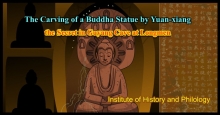 The Institute of History and Philology (IHP), Academia Sinica, has accumulated a huge amount of historical archives and collections, including archaeological data, language data, ethnological data, rare books, documents of Ming and Qing Dynasties, and stone and bronze rubbings. IHP has produced 10 animation videos so that viewers can get a glimpse of these treasures. .....
The Institute of History and Philology (IHP), Academia Sinica, has accumulated a huge amount of historical archives and collections, including archaeological data, language data, ethnological data, rare books, documents of Ming and Qing Dynasties, and stone and bronze rubbings. IHP has produced 10 animation videos so that viewers can get a glimpse of these treasures. .....
|
|
Read more...
|
|
|
Ceramics Digitization Procedures Guideline |
|
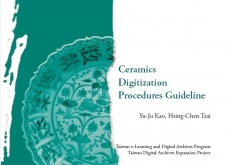 Apart from the ancient ceramics collected in museums, kiln sites from all over Taiwan are continuously creating ceramics with local features. While there is a need for ancient ceramic to be preserved via digital archives, the need is greater for ceramics with local features to be digitized to enable the world to comprehend the subtleties of the traditional techniques as well as the rich creativity of Taiwanese people. The purpose of this guideline is to integrate prior digitization experiences of domestic institutions; generalize reference guidelines for digitization work; and provide a set of standards for other institutions with ceramic collections when they join the ranks of digital archives, .....
Apart from the ancient ceramics collected in museums, kiln sites from all over Taiwan are continuously creating ceramics with local features. While there is a need for ancient ceramic to be preserved via digital archives, the need is greater for ceramics with local features to be digitized to enable the world to comprehend the subtleties of the traditional techniques as well as the rich creativity of Taiwanese people. The purpose of this guideline is to integrate prior digitization experiences of domestic institutions; generalize reference guidelines for digitization work; and provide a set of standards for other institutions with ceramic collections when they join the ranks of digital archives, .....
|
|
Read more...
|
|
String-Bound Book Digitization Procedures Guideline |
|
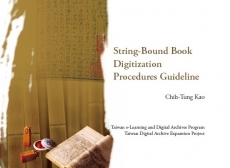 Ancient Chinese and Western books utilized string as binding material. In China, book pages, along with same-size front and back covers, were sewed together using strings. This method made it easier to browse a book and harder for a book to fall apart. The string-sewing method became common from the middle period of Ming Dynasty on. The “string-bound ancient books” referred to in the guideline are hand-written or printed books dated before 1911. Since these books are made of paper and string, they can easily be damaged and embrittled by natural disasters or over usage. It is all the more important to digitize them. .....
Ancient Chinese and Western books utilized string as binding material. In China, book pages, along with same-size front and back covers, were sewed together using strings. This method made it easier to browse a book and harder for a book to fall apart. The string-sewing method became common from the middle period of Ming Dynasty on. The “string-bound ancient books” referred to in the guideline are hand-written or printed books dated before 1911. Since these books are made of paper and string, they can easily be damaged and embrittled by natural disasters or over usage. It is all the more important to digitize them. .....
|
|
Read more...
|
|
|
|
|
<< Start < Prev 1 2 3 4 Next > End >>
|
|
Page 3 of 4 |